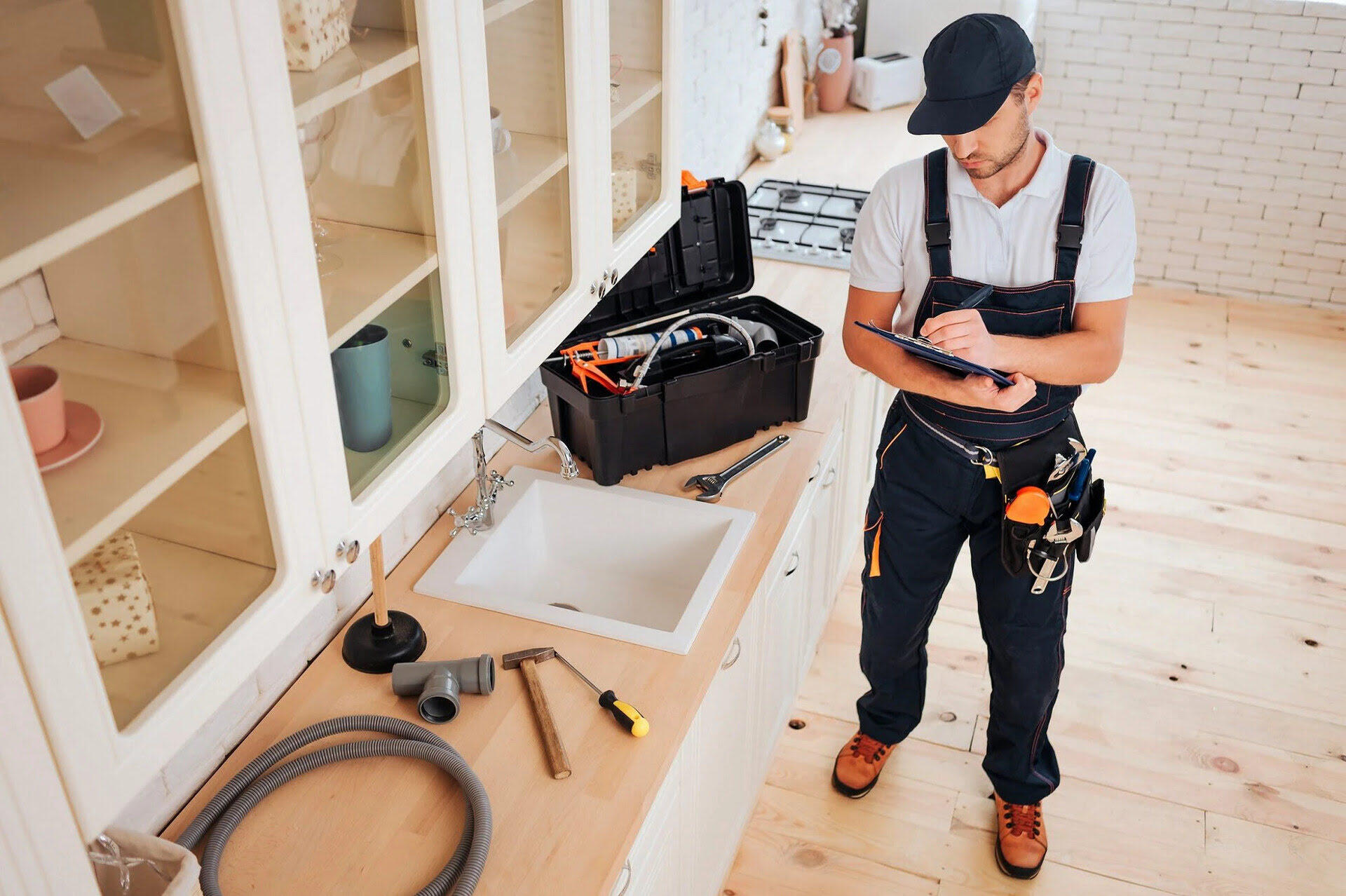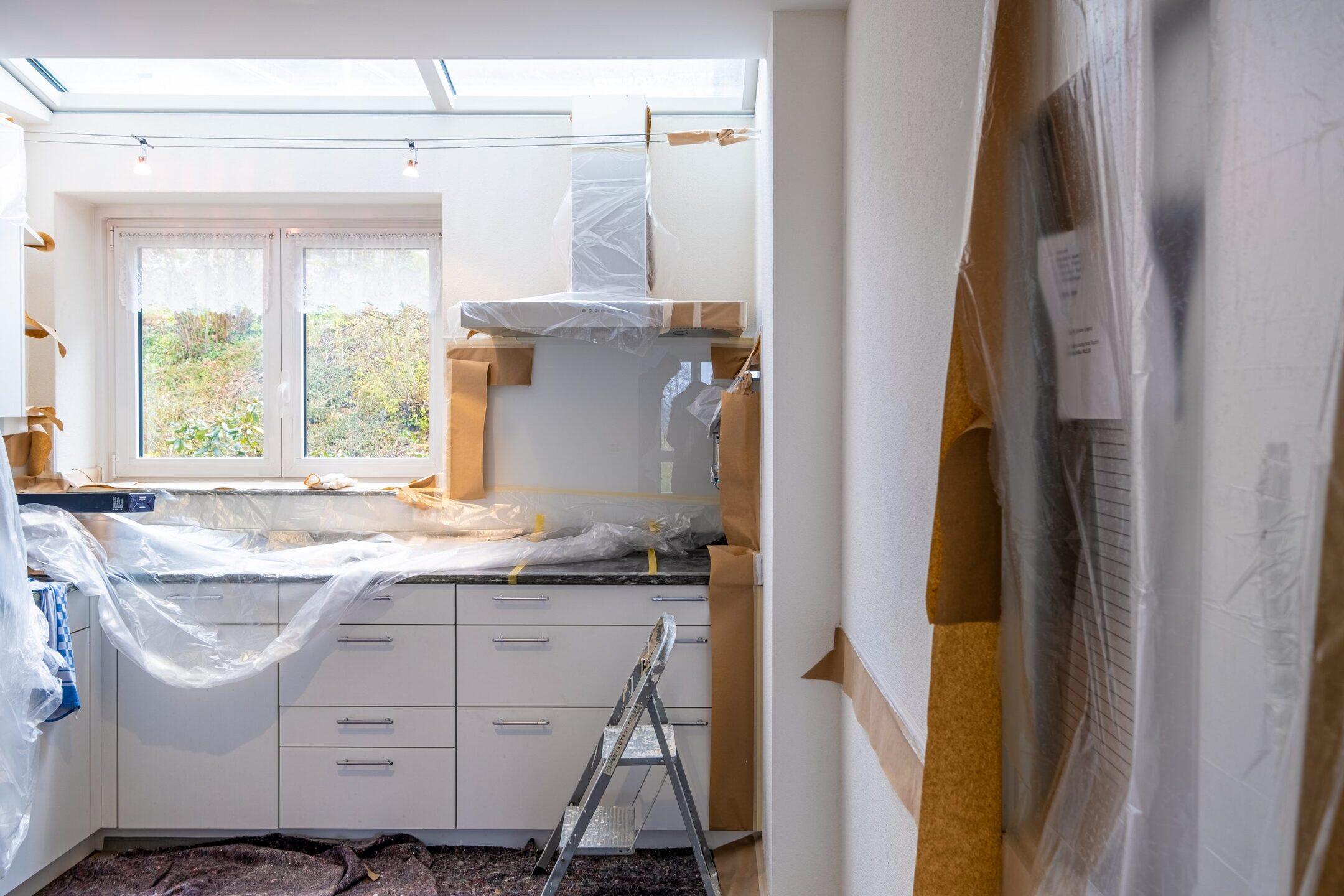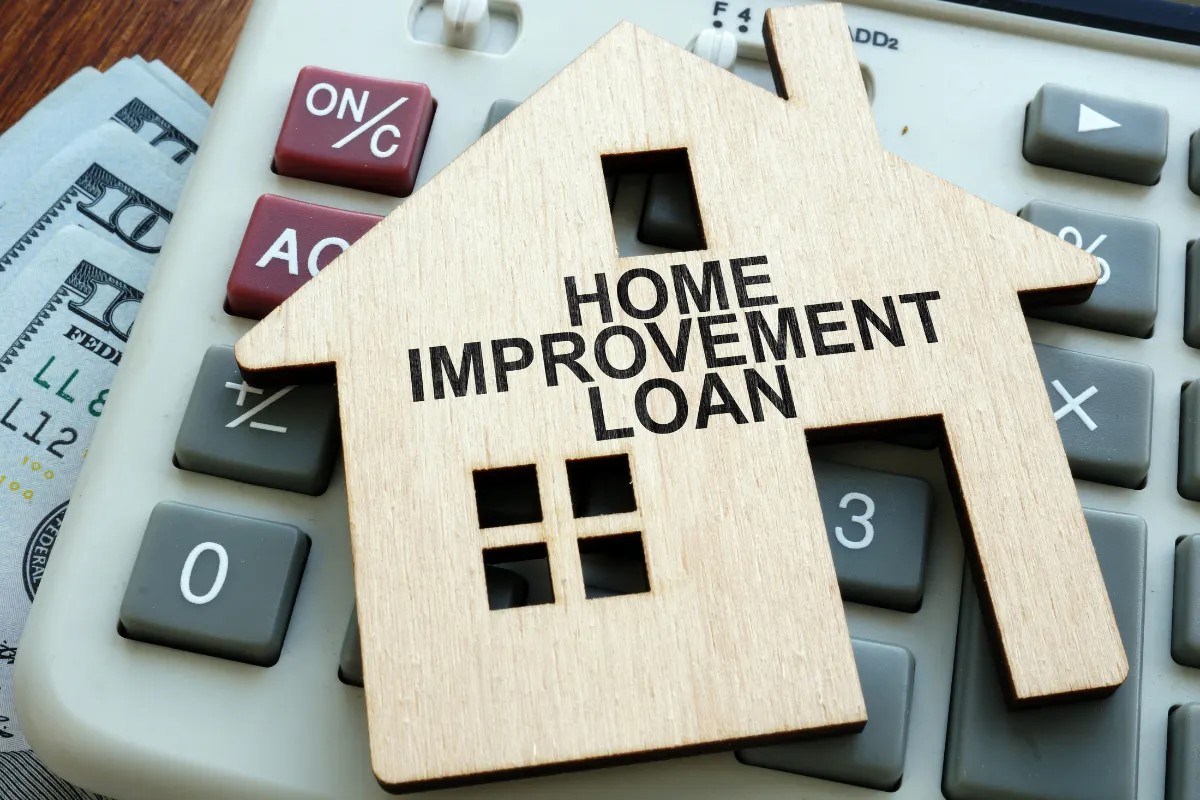Home>Renovation & DIY>Home Renovation Guides>How To Keep Track Of Home Improvements?


Home Renovation Guides
How To Keep Track Of Home Improvements?
Modified: August 17, 2024
Learn how to effectively track and manage your home renovation projects with our comprehensive guides and tips. Stay organized and on top of your home improvements with expert advice.
(Many of the links in this article redirect to a specific reviewed product. Your purchase of these products through affiliate links helps to generate commission for Storables.com, at no extra cost. Learn more)
**
Introduction
**
Welcome to the world of home improvement! Whether you're a seasoned homeowner or just dipping your toes into the realm of DIY, one thing is for certain: home improvements are an ongoing journey. From minor touch-ups to major renovations, each project adds value, comfort, and personalization to your living space. However, amidst the excitement of transforming your home, it's crucial to keep track of these improvements. Why, you ask? Well, that's precisely what we're here to explore.
Tracking home improvements is more than just a mundane task; it's a strategic approach to maintaining and enhancing your property. By documenting the changes, upgrades, and maintenance activities, you not only ensure the longevity and efficiency of your home but also gain valuable insights for future projects. Additionally, keeping a record of home improvements can be immensely beneficial for insurance purposes, property valuations, and even when it's time to sell your home.
In this comprehensive guide, we'll delve into the various methods and tools for effectively tracking home improvements. From traditional methods like creating a home improvement journal to leveraging the power of technology, we'll uncover the best practices to organize and manage your home improvement endeavors. So, whether you're planning a complete kitchen overhaul or simply sprucing up the garden, join us on this journey to discover the art of keeping track of home improvements. Let's embark on this insightful adventure together!
Key Takeaways:
- Tracking home improvements is crucial for budgeting, property valuation, maintenance, insurance, future planning, and increasing resale value. It’s like creating a roadmap for your home’s journey!
- You can track home improvements using receipts, spreadsheets, apps, and even a home improvement journal. It’s a blend of practicality, creativity, and dedication to nurturing your living space.
Read more: Which Receipts To Keep For Home Improvements
Importance of Keeping Track of Home Improvements
Embarking on home improvement projects is exhilarating. Whether it’s revamping the kitchen, updating the bathroom, or adding a cozy patio, each enhancement contributes to the overall appeal and functionality of your home. However, the significance of keeping track of these improvements cannot be overstated. Here’s why it’s crucial:
1. Financial Transparency:
Tracking home improvements provides a clear picture of the financial investments made in your property. This documentation is invaluable for budgeting future projects and accurately assessing the overall cost of homeownership.
2. Property Valuation:
When it comes to determining the value of your home, a detailed record of improvements can significantly impact the appraisal. It showcases the care and maintenance put into the property, potentially increasing its market worth.
3. Maintenance and Upkeep:
Regular maintenance is key to preserving the integrity of your home. By tracking improvements, you can stay on top of maintenance schedules, identify areas that require attention, and ensure that your property remains in top-notch condition.
4. Insurance Purposes:
In the unfortunate event of damage or loss, having a comprehensive record of home improvements can streamline the insurance claims process. It serves as evidence of the property’s condition before the incident, facilitating smoother settlements.
5. Future Planning:
Documenting home improvements provides a roadmap for future projects. It helps in understanding the lifespan of various components, such as roofing, appliances, and structural elements, allowing for proactive planning and budgeting.
6. Resale Value:
When the time comes to sell your home, a thorough record of improvements can be a powerful selling point. It demonstrates the care and attention given to the property, potentially attracting buyers and justifying a higher asking price.
By recognizing the importance of tracking home improvements, you’re not only enhancing your current living space but also laying the groundwork for a well-maintained, valuable property. Now, let’s explore the various ways to effectively keep track of these valuable enhancements.
Ways to Keep Track of Home Improvements
Now that we understand the significance of tracking home improvements, let’s explore the practical methods to accomplish this. From simple yet effective approaches to leveraging technology, there are several ways to keep a comprehensive record of your home enhancement endeavors. Here are some valuable methods:
1. Documenting Receipts and Invoices:
One of the most straightforward ways to track home improvements is by organizing and retaining all receipts and invoices. Whether it’s for a new HVAC system, fresh paint, or landscaping services, maintaining a dedicated file for these documents provides a clear financial trail of your investments.
2. Creating a Spreadsheet:
A digital spreadsheet can be a powerful tool for cataloging home improvements. You can categorize the expenses, note down the dates of each project, and even include details such as contractor information and warranty periods. This method allows for easy access and quick reference.
3. Utilizing Home Improvement Apps:
There are numerous mobile apps designed specifically for tracking home improvements. These apps often feature expense tracking, project timelines, and even reminders for maintenance tasks. They provide a convenient way to centralize all home improvement information in one place.
4. Maintaining a Physical Home Improvement Binder:
If you prefer a tangible record, consider creating a home improvement binder. This can include sections for receipts, project plans, before-and-after photos, and any relevant permits or warranties. Having a physical binder allows for a hands-on approach to organizing your home improvement journey.
5. Implementing a Home Improvement Calendar:
A dedicated calendar for home improvement projects and maintenance tasks can be incredibly beneficial. By scheduling routine inspections, filter replacements, and seasonal upkeep, you ensure that no aspect of home maintenance is overlooked.
By employing these methods, you can systematically track and manage your home improvements, fostering a well-documented and organized approach to maintaining and enhancing your living space. However, with the advancements in technology, there are even more innovative ways to streamline this process. Let’s explore the integration of technology in organizing home improvement projects.
Using Technology to Organize Home Improvement Projects
In today’s digital age, technology offers a myriad of tools and platforms to simplify and streamline various aspects of our lives, including home improvement endeavors. Leveraging technology can revolutionize the way you organize and manage your projects, providing efficiency and convenience. Here are some innovative ways to integrate technology into your home improvement tracking:
1. Project Management Software:
Utilize project management tools such as Trello, Asana, or Monday.com to create detailed project boards for each home improvement endeavor. These platforms allow you to outline tasks, set deadlines, and collaborate with family members or contractors, ensuring a structured and organized approach to your projects.
2. Digital Documentation:
Instead of accumulating physical paperwork, consider digitizing your home improvement records. Scan and store receipts, invoices, and project plans in cloud storage services like Google Drive or Dropbox. This not only reduces clutter but also provides easy access to important documents from anywhere.
3. Home Inventory Apps:
Explore home inventory apps that enable you to catalog your possessions and track home improvements. These apps often include features for recording purchase details, warranty information, and even depreciation calculations, offering a comprehensive overview of your property’s assets.
4. Smart Home Technology:
Integrate smart home devices that offer insights into your property’s maintenance needs. Smart thermostats, water leak detectors, and security systems can provide valuable data on energy usage, potential issues, and security alerts, contributing to proactive maintenance and improvement tracking.
5. Virtual Home Tours:
Consider creating virtual tours of your home using 3D modeling or virtual reality (VR) technology. These tours serve as visual documentation of your property’s evolution, showcasing the before-and-after transformations of various home improvement projects.
By harnessing the power of technology, you can elevate the organization and management of your home improvement projects to new heights. The seamless integration of digital tools not only simplifies the tracking process but also enhances your overall experience as a homeowner. However, amidst the digital innovations, there’s immense value in maintaining a tangible record of your home improvements. Let’s explore the timeless method of creating a home improvement journal.
Create a home improvement binder to keep track of receipts, warranties, and project details. This will help you stay organized and easily access information when needed.
Creating a Home Improvement Journal
Amidst the digital advancements, there’s a timeless charm in maintaining a physical record of your home improvement journey. A home improvement journal serves as a personalized, detailed account of the enhancements, challenges, and triumphs experienced throughout the evolution of your living space. Here’s how to create and leverage this traditional yet invaluable method:
1. Selecting the Right Journal:
Choose a journal or notebook that resonates with you. Whether it’s a classic leather-bound journal or a vibrant, visually appealing notebook, the key is to select a journal that inspires you to document your home improvement stories.
2. Documenting Project Details:
For each home improvement project, dedicate a section in your journal to document the details. Include the project’s purpose, timeline, budget, materials used, and any unexpected hurdles encountered. This serves as a narrative of the project’s journey and can offer valuable insights for future endeavors.
3. Incorporating Visual Elements:
Add a visual dimension to your journal by including before-and-after photos, sketches, or clippings of design inspirations. Visual representations not only enhance the storytelling but also provide a captivating visual record of the transformations achieved through your efforts.
4. Reflective Entries:
Utilize your journal as a space for reflective entries. Record your thoughts, emotions, and lessons learned during each project. These personal insights add depth to the documentation, creating a rich tapestry of your home improvement narrative.
5. Maintenance Logs and Upkeep Schedules:
Allocate a section for maintenance logs and schedules. Note down routine maintenance tasks, service dates for appliances, and any repairs or replacements. This proactive approach ensures that your journal becomes a comprehensive guide for the ongoing care of your home.
6. Personal Touches and Stories:
Infuse your journal with personal anecdotes, anecdotes, and memories associated with each project. Share the moments of triumph, the humorous mishaps, and the joyous memories created through the process of improving your home.
A home improvement journal is not merely a documentation of projects; it’s a narrative of your home’s evolution and the experiences woven into its every corner. It becomes a cherished keepsake, offering a window into the dedication and care invested in creating a personalized haven. As we delve into the art of maintaining and enhancing our homes, it’s essential to complement the creative flair of a journal with a structured approach to home maintenance. Let’s explore the establishment of a maintenance schedule.
Establishing a Maintenance Schedule
While the thrill of embarking on home improvement projects is undeniable, the longevity and functionality of your living space greatly depend on consistent maintenance. Establishing a maintenance schedule is a proactive approach to preserving the investments made in your home and ensuring its continued comfort and safety. Here’s how to create and implement an effective maintenance schedule:
1. Comprehensive Property Assessment:
Begin by conducting a comprehensive assessment of your property. Identify the various components, systems, and areas that require regular maintenance, including HVAC systems, plumbing, electrical, roofing, and landscaping.
2. Categorizing Maintenance Tasks:
Organize the maintenance tasks into categories such as seasonal, monthly, quarterly, and annual. This categorization allows for a structured and systematic approach to scheduling and performing the necessary upkeep.
3. Utilizing Reminders and Alerts:
Leverage digital calendars, reminder apps, or home management platforms to set up automated reminders for maintenance tasks. These tools ensure that important upkeep activities are not overlooked, providing peace of mind and efficiency.
4. Collaboration and Delegation:
If you share your living space with family members or housemates, involve them in the maintenance schedule. Delegate specific tasks and responsibilities, fostering a collective effort in preserving the home’s condition and functionality.
5. Flexibility and Adaptability:
While a maintenance schedule provides a framework, it’s essential to remain flexible and adaptable. Factors such as weather conditions, unexpected repairs, and evolving home needs may necessitate adjustments to the schedule, and being open to these changes is crucial.
6. Documentation and Evaluation:
Record the completion of maintenance tasks in your home improvement journal or digital tracking system. This documentation serves as a record of upkeep and provides insights into the frequency and effectiveness of maintenance activities.
By establishing a maintenance schedule, you not only ensure the continuous functionality and safety of your home but also cultivate a proactive and conscientious approach to homeownership. The combination of creative documentation, structured scheduling, and the integration of technology forms a holistic approach to tracking and maintaining home improvements. As we conclude this comprehensive guide, it’s evident that the art of keeping track of home improvements is a blend of practicality, creativity, and dedication. By embracing these principles, you’re not just enhancing your living space; you’re nurturing a personalized sanctuary that reflects your care and commitment. Here’s to the journey of transforming houses into homes and creating lasting memories within their walls.
Conclusion
Congratulations on embarking on the enriching journey of home improvements! Throughout this guide, we’ve explored the multifaceted art of keeping track of home enhancements, from recognizing the importance of documentation to implementing innovative methods for organization and maintenance. As you navigate the realm of DIY projects, renovations, and property upkeep, it’s essential to embrace a harmonious blend of practicality, creativity, and foresight.
By documenting your home improvements, whether through traditional methods like creating a home improvement journal or leveraging the power of technology, you’re not just recording projects; you’re crafting a narrative of dedication and care. Each receipt, photo, and reflective entry becomes a testament to your commitment to creating a space that resonates with comfort, functionality, and personal style.
Furthermore, the establishment of a maintenance schedule ensures that the investments made in your home are safeguarded for the long term. By proactively addressing upkeep and maintenance, you’re nurturing a living environment that thrives in its functionality and exudes a sense of enduring warmth and security.
As you continue to enhance and maintain your living space, remember that the journey itself is as significant as the destination. The memories created during each project, the lessons learned from unexpected challenges, and the shared moments of accomplishment with loved ones are all integral parts of the home improvement narrative.
So, whether you’re meticulously organizing receipts in a home improvement binder, setting up automated reminders for maintenance tasks, or penning down reflective entries in your journal, each action contributes to the holistic art of keeping track of home improvements. It’s a journey that intertwines creativity and practicality, resulting in a home that reflects not just a physical space, but a story of dedication, memories, and personal expression.
As you venture forward, may your home continue to evolve as a sanctuary that encapsulates your unique vision and nurtures cherished moments for years to come. Here’s to the art of keeping track of home improvements and the profound impact it has on creating spaces that resonate with comfort, joy, and enduring beauty.
Frequently Asked Questions about How To Keep Track Of Home Improvements?
Was this page helpful?
At Storables.com, we guarantee accurate and reliable information. Our content, validated by Expert Board Contributors, is crafted following stringent Editorial Policies. We're committed to providing you with well-researched, expert-backed insights for all your informational needs.















0 thoughts on “How To Keep Track Of Home Improvements?”